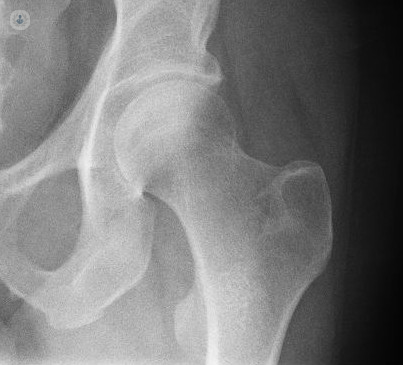


What is hip resurfacing?
Hip resurfacing is a type of hip replacement which replaces the surfaces of the hip joint and preserves more bone than a total hip replacement surgical procedure. Unlike with total hip replacement surgery, the head of the femur (the ball) is not removed but it is reshaped so that a metal cap is cemented on top of it. The surface of the socket (acetabulum) is replaced with a metal implant, wedged directly into the bone.
Why is it done?
Hip resurfacing is thought to have certain advantages over a total hip replacement.
Firstly, the prosthetic parts used in any joint replacement wear out over time and typically must be replaced after 15-20 years in a procedure called a revision hip replacement. Revisions are much easier after hip resurfacing.
Hip resurfacing makes the ball of the joint larger than it was before, thus decreasing the risk of dislocation. It has also been claimed that hip resurfacing restores a more natural gait than a total hip replacement.
What does hip resurfacing involve?
Hip resurfacing is a surgical procedure that lasts between one and three hours. Patients are usually admitted to hospital prior to the procedure and will be put under general anaesthetic to render them unconscious during the operation.
The surgeon makes an incision in the thigh and dislocates the head of the femur from its socket. The head is trimmed and reshaped, and then a metal cap is cemented on top to become the new “surface” of the bone. The old cartilage in the socket is also removed and a metal cup is fitted in its place. The femoral head, complete with metal cap, is clicked back into the socket, now also lined with metal. The surgeon then closes the incision.
After surgery you will be taken to the recovery room, where you will be closely monitored by nurses as you recover from the anaesthesia. You will then be taken to your hospital room.
Aftercare
The patient will need to stay in the hospital for 1-4 days, while they recover. They may require a walking aid, such as a crutch at first. Pain medication will likely be prescribed to deal with post-operative pain, and some physiotherapy is often required to help the leg recover mobility.
